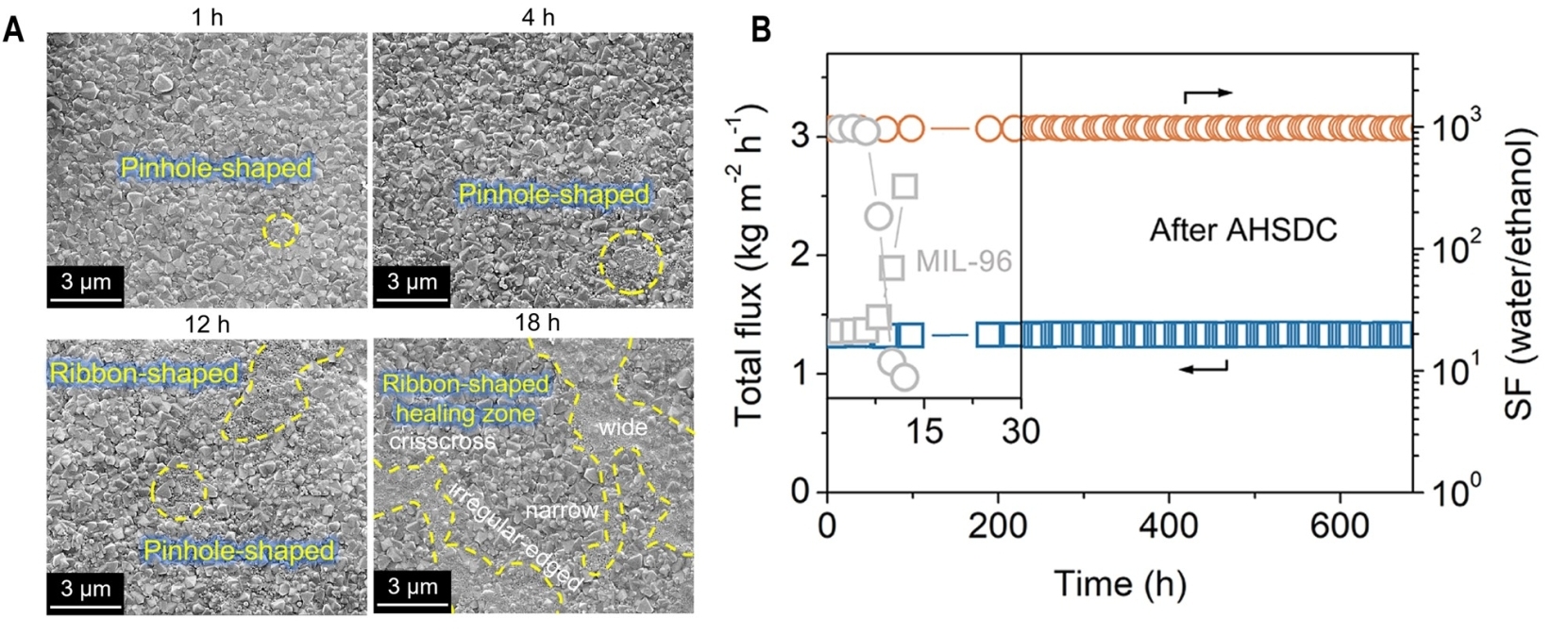Recently, a research group led by Prof. YANG Weishen and Prof. BAN Yujie from the Dalian Institute of Chemical Physics (DICP) of the Chinese Academy of Sciences (CAS) proposed adaptive healing of stress-induced dynamic cracks in a metal-organic framework membrane using nanoparticles.
This study was published in Science Advances on 31 July.

Shapes of adaptive healing zones in a MOF membrane (A), the separation durability of the membrane after adaptive healing (B) (Image by BAN Yujie and WANG Yuecheng)
Traditional post crack-healing technologies have been widely applied. However, due to the spatiotemporal mismatch between crack formation and crack healing, they lack of point-by-point healing accuracy and result in a large healing zone, thus leading to increased membrane thickness and mass transfer resistance.
In this study, the research team proposed adaptive healing of stress-induced dynamic cracks (AHSDC) in membranes using nanoparticles.
The researchers indicated that the core was to create spatiotemporal harmony between generation and healing of cracks. Therefore, AHSDC leveraged risk factors to overcome the membrane's tolerance limits and made stress-induced dynamic cracks fully exposed prior to separation. At the same time, AHSDC employed in situ formed nanoparticles in the same chemical environment to immediately fill crack gaps once cracks formed in the membrane.
Furthermore, the researchers proved that AHSDC could function with point-by-point accuracy and form adaptive healing zones with the ability of self-selecting their shapes according to peculiarities of cracks.
"Our membrane after AHSDC retained satisfactory separation performances for azeotropic mixtures with energy consumption saved by approximately 85%, such as the ethanol-water system", said Prof. YANG.
"The separation durability was improved by at least two orders of magnitude," said Prof. BAN.